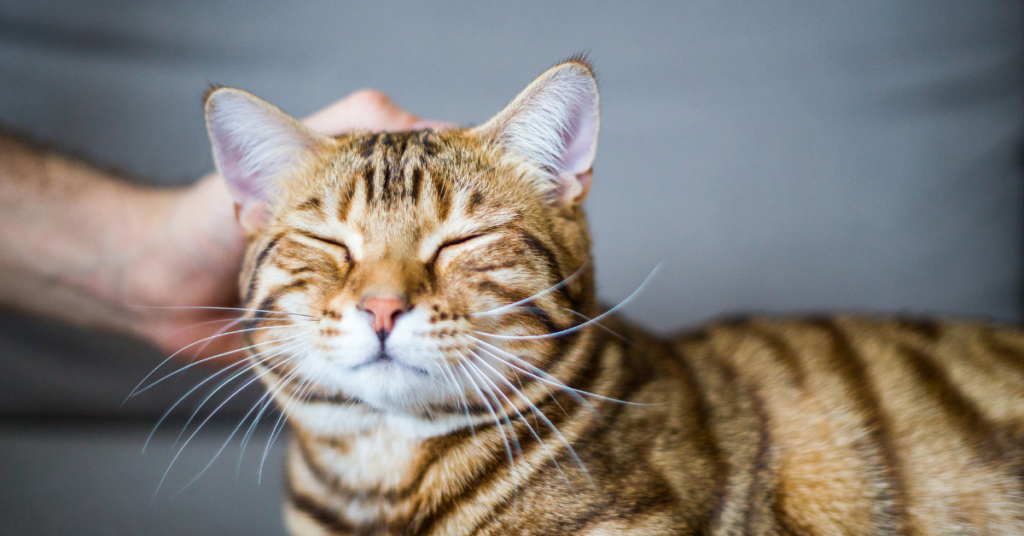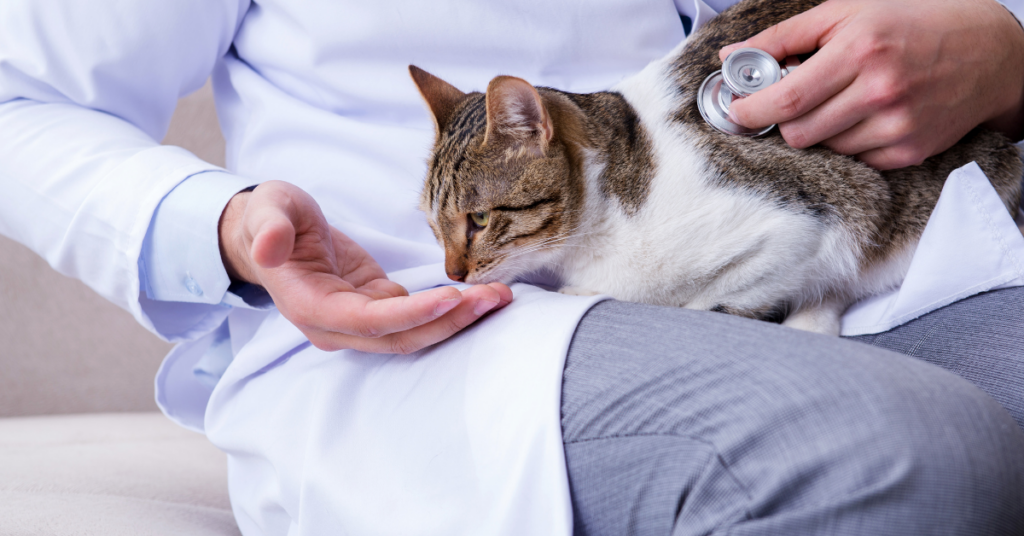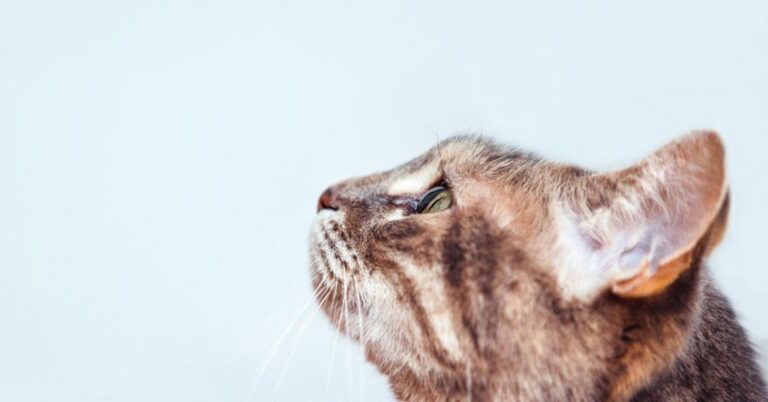How to Treat a Cat UTI
Reviewed by Lauren Cannon, DVM
Cleaning the litter box isn’t a cat’s owner’s favorite task, but it’s necessary to monitor your cat’s urinary system health.
Cat UTI or lower urinary tract problems can affect cats of all ages. However, it’s more common in older cats of 10 years of age and older.
Other cats develop obstructions and bladder stones, which require surgery.
If your cat’s urination habits change, it could indicate a urinary tract infection.
Read more about cat UTI, causes, signs, and how they can be treated.
What is a Cat UTI?

Urinary tract infections UTIs in cats are usually common. Cat UTI happens when bacteria move up the urethra and into the bladder.
Although urine in the bladder is intended to be sterile, once bacteria enter the bladder, they can grow and multiply, resulting in a UTI.
UTIs are more common in older female cats and cats with diabetes mellitus “sugar diabetes”.
In addition, cats with bladder stones are more prone to frequent UTIs.
Causes of Cat UTI

When you take your cat to the veterinarian, they may ask you questions about his or her symptoms in order to narrow down the problem’s source.
The most common cause of cat UTI is bacterial infection. However, there are other causes. These include:
Uroliths or Urinary Stones
Urine includes minerals that can cluster together in your cat’s bladder, forming small crystals and even huge stones.
They can irritate the bladder or urethra lining, resulting in bloody urine and discomfort during peeing.
Urethral Obstruction
Your cat’s urethra can become totally clogged in some circumstances, either due to stones or a build-up of minerals and tissue known as a “urethral plug.”
A cat with a blockage like this will be unable to pass urine. A urethral blockage is a life threatening emergency, and you should contact your veterinarian immediately.
Male cats are more prone to suffer urethral blockages. Their urethras are longer and thinner than female cats. Because of its size and form, the smaller channel is more likely to become clogged.
Feline Idiopathic Cystitis
Feline Idiopathic Cystitis, is an inflammation to the bladder with no known reason.
FIC is an exclusionary diagnosis that is made after all other possible explanations of the clinical symptoms have been ruled out.
Idiopathic feline lower urinary tract disease, or iFLUTD, was the original name for this illness.
Other Causes
Other health conditions may cause cat urinary tract infections. Diabetes and thyroid issues are sometimes to blame.
In rare cases, cats can get tumors in their urinary tract. Your vet will need to do blood and urine tests to diagnose these conditions.
Stress is also considered to play a role in the development of a urinary tract problem. Cats are creatures of habit, and when their habits are disrupted, they can get stressed.
Stressful events for cats include having a new baby in the family, another pet, or a relocation to a new home.
Signs of Cat UTI

The bladder and urethra are part of the lower urinary system. Urine is produced and held in the bladder until it is released via the urethra and exits your cat’s body.
Your cat won’t be able to urinate properly if those parts get infected or blocked. Signs of a urinary tract infection include:
- Frequently trips to the litter box. This might happen if the cat’s bladder isn’t entirely emptied and they have a continual need to urinate.
- Urinating outside the litter box
- Pain while urinating
- Straining to urinate
- Presence of blood in the urine
- Frequent licking around the urinary opening
- Changes in behavior like lethargy
Urinary tract infections may be very unpleasant for your cat. If your cat experiences these symptoms, you should get treatment as soon as possible.
Diagnosis of Cat UTI

If your cat shows signs of UTI, take him/her to the vet as soon as possible. The vet will perform a full physical exam for your cat.
In order to know for sure if your cat has a urinary tract infection, a urinalysis is required.
The urinalysis will help the vet in collecting information which include, how well the cat is concentrating their urine, pH levels, ketones, sugar in urine, and other components.
After these levels have been determined, the urine sample is spun down in a centrifuge to allow cells and other debris to settle to the bottom of the sample tube.
The presence of red blood cells, white blood cells, germs, and crystals may then be determined from the debris.
The only method to figure out which bacteria is causing the cat’s UTI is to grow it in a lab. At the same time, the lab can determine which antibiotic is most effective in treating the infection.
In addition, the vet may need to do some blood tests, to rule out issues, such as kidney disease or diabetes.
Finally, X-rays and ultrasounds may be required to look for kidney stones, or other blockages.
Treatment of Cat UTI

Common treatment of cat UTI is usually done using antibiotics. The vet may also prescribe pain medication, and change in diet.
A suitable antibiotic will be recommended after the culture and sensitivity findings have been obtained.
It is critical to repeat the urinalysis after the medicines have been administered to ensure that the infection has been cleared.
If it isn’t, it’ll be necessary to investigate other factors that might be contributing to a recurrent UTI.
How to Prevent Cat UTI

In order to prevent the recurrence of urinary tract infections in cats. There are a couple of things you can do.
Firstly, always provide a clean bowl of water for your cat that is easy to access, to increase their water intake.
Consult your veterinarian in terms of changing the cat’s diet. There are specific diets that can help in preventing future UTIs and maintain the bladder’s health.
You can increase the amount of wet food in their diet, as it includes more moisture than dry kibble.
Alternatively, you may wet the dry kibble by soaking it in water for around 15 minutes.
Always consult your veterinarian for diet recommendations. Finally, try to clean the litter box more often, so you may know how much and how often your cat is going to the bathroom.
Most cats prefer a clean litter box, so it can also help your cat feel more comfortable when they go.
When to See a Veterinarian

If you notice signs of UTI on your cat like frequent urination, straining to urinate, or changes in behavior.
Contact your veterinarian as soon as possible, to help in early diagnosis and treatment, and relieve any pain your cat may be experiencing.







